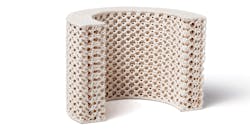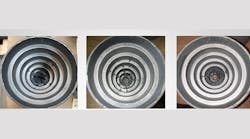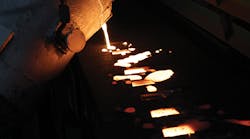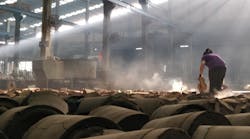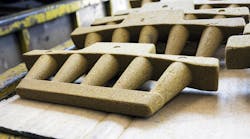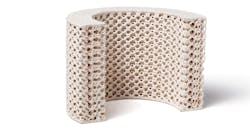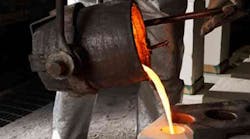U.S. EPA Method 24 also allows subtraction of water and other volatile components that are “VOC exempt.” Unfortunately, U.S. EPA Method 24, while very good at mimicking the use of fingernail polish and many surface coatings, does not represent foundry binders chemically curing. As such, in laboratory testing U.S. EPA Method 24 will significantly overestimate the actual VOC emissions when foundry binders are used.
This being the case, the OCMA VOC Method was developed to measure VOC emissions more accurately for many foundry binder systems. This is also a method for determining weight loss, but this time involved mixing the binder components with sand and letting them cure.
Unfortunately, the VOC emissions of warm-box binder systems cannot be estimated accurately by either of these two common methods. Two factors — 1) volatile components in the warm-box binders that react to non VOC-cured polymers, and 2) water present in the binder systems — create difficulties for both common laboratory methods for VOC emission estimates. U.S. EPA Method 24 will grossly over estimate the VOC emissions of warm-box binder systems and the OCMA Method will underestimate the VOC emissions, often resulting in negative VOC emissions.
A new laboratory method for VOC estimates suitable for warm-box binder systems is available, and should be applied. This new method involves carefully making cured warm-box cores and then measuring the standard Loss on Ignition (LOI) of the fully cured and dried cores. The VOC estimated emission is related to the LOI of the core compared to the amount of binder and catalyst in the sand mix.
Quite a few corrections will need to be applied and considered when running this test. The LOI of the sand, the water content of the binder system, and the water produced during curing are some of the corrections. When run on typical warm-box resin system this new laboratory method for VOC emissions will predict about 0.8 to 0.9 pounds of VOC emissions for every 1,000 pounds of mixed sand. The VOC emissions estimated include VOC emissions from sand mixing, coremaking, and core storage. Additional VOC emissions at casting are not included in this test method.
For comparison, when U.S. EPA Method 24 is run the VOC emissions estimate is about 6.75 pounds of VOC per 1,000 pounds of mixed sand, and the OCMA VOC Method gives negative values for VOC emissions if corrected for water content.
Join the Conversation. Email Your Questions for ASK Chemicals
Share your insights, opinions, and elaborate on the questions and the experts' answer(s). You must be logged in to the website in order to post your comments.
